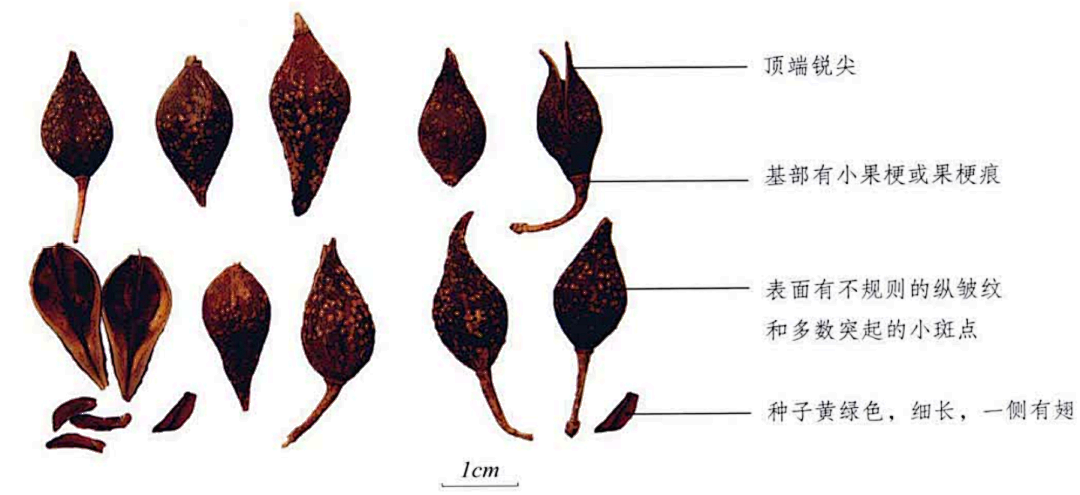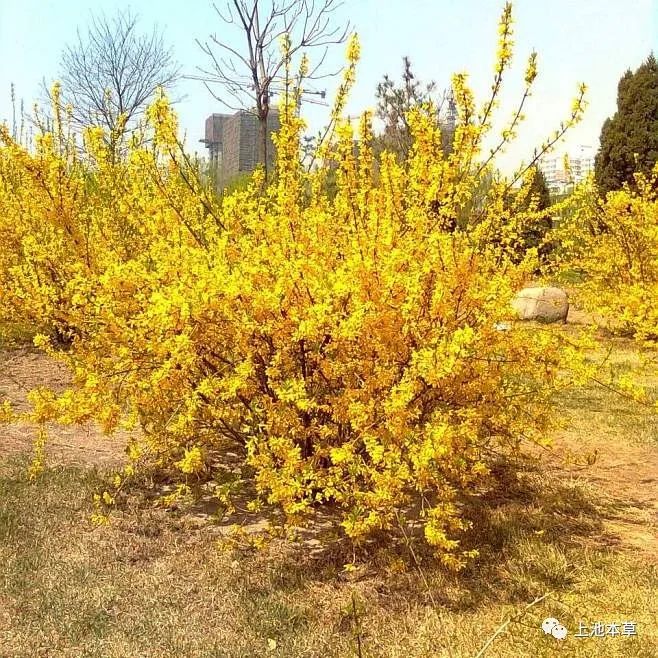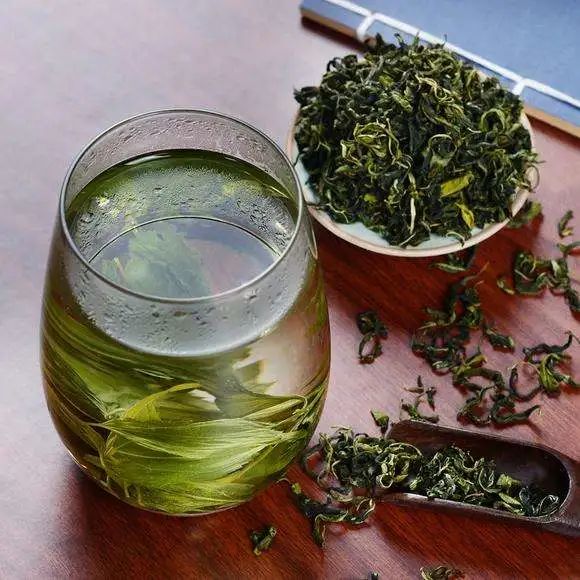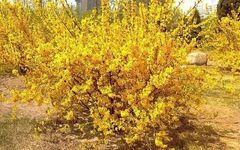Characteristics of the Herb
This herb is oval to oblong in shape, slightly flattened. It measures 1.5 to 2.5 cm in length and 0.5 to 1.3 cm in diameter. The surface has irregular longitudinal wrinkles and numerous small raised spots, with one prominent longitudinal groove on each side. The tip is sharply pointed, and the base has a small fruit stalk or has fallen off.

The green Lian Qiao is mostly uncracked, with a greenish-brown surface and fewer raised grayish-white spots; it is hard; the seeds are mostly yellow-green, slender, with wings on one side.

The old Lian Qiao cracks from the top or splits into two lobes, with a surface yellow-brown or red-brown, and the inner surface is mostly light yellow-brown, smooth, with a longitudinal septum; it is brittle; the seeds are brown, and most have fallen off.
It has a faint fragrance and a bitter taste.
Traditional experience suggests that “green Lian Qiao” is best when it is green and uncracked. “Old Lian Qiao” is preferred when it is more yellow, with larger lobes and thicker shells.
Effects and Functions
Lian Qiao, as a traditional Chinese medicinal material, has a bitter taste and a cold nature, entering the Heart (Xin) and Lung (Fei) meridians. It possesses multiple functions such as clearing heat and detoxifying, reducing swelling and dispersing nodules, as well as dispelling wind and clearing heat. It is commonly used for treating wind-heat colds, fevers, and various diseases such as irritability and headaches. Additionally, it can be taken in appropriate amounts for acute nephritis or jaundice to help improve the condition quickly.

The medicinal value of Lian Qiao
1. Treatment of breast abscess
Lian Qiao can soften hardness and disperse nodules, making it a common medicine for treating breast abscesses. It can be combined with dandelion (Pu Gong Ying) and Fritillaria (Chuan Bei Mu), each taking 2 qian, boiled with water, and taken directly as a decoction once daily.
2. Treatment of mouth and tongue sores
Lian Qiao can clear heat, detoxify, and kill bacteria, and is used for treating mouth and tongue sores. For treatment, 5 qian of Lian Qiao should be combined with 3 qian of Phellodendron (Huang Bai) and 2 qian of Licorice (Gan Cao), boiled together with water to make a decoction, and used for gargling multiple times a day to quickly alleviate pain from mouth sores.
3. Treatment of high fever in children
Lian Qiao has a certain antipyretic effect, making it suitable for children with high fevers. For treatment, equal parts of Lian Qiao, Siler (Fang Feng), Licorice (Gan Cao), and Gardenia (Shan Zhi Zi) should be ground into a fine powder, with 2 qian taken each time, boiled with an appropriate amount of water, and the residue removed before giving it to the child. Clinically, Lian Qiao can also be used for treating sore throat; for this, it should be boiled with water, and after cooking, honey can be added for flavor before consumption.
Tea Substitute
On the Taihang Mountains, there is a treasure,
Golden and bright is Lian Qiao.
Drying and roasting yield fragrant tea,
Clearing heat and dispelling fire brings refreshment.


Scroll up and down to view this bookmark
Lian Qiao not only has fruits that can be used as a medicinal material for clearing heat and detoxifying, but its leaves and flowers can also be used as tea. Regular consumption of Lian Qiao tea has certain efficacy in treating hypertension.
Harvesting:
The best time to harvest Lian Qiao flowers is when they first bloom, around the Grain Rain season. At this time, the flowers are fresh, abundant, and the resulting Lian Qiao flower tea has a good flavor. The best time to harvest Lian Qiao leaves is 4 to 5 days after flowering, when 1 to 2 leaves have just grown and are not fully unfolded. At this time, the leaves are tender and suitable for making Lian Qiao tea.
Steaming Method:
Drying: Remove impurities from the harvested Lian Qiao leaves and flowers and place them in the sun to dry until semi-dry (removing 40% to 50% of moisture), but do not dry completely.
Steaming: Place the Lian Qiao leaves in a steamer. Since the leaves and flowers are very tender, the steaming time should not be too long, about 3 to 5 minutes (timed from when the water starts boiling).
Rolling: After steaming, the Lian Qiao leaves and flowers should be dried until 60% to 70% of moisture is removed before rolling them into strips.
Repeated Steaming and Rolling: The rolled Lian Qiao leaves and flowers should be steamed again for 3 to 5 minutes, then dried and rolled again. This process should be repeated 7 to 9 times (commonly known as “nine steams and nine dries”) until the final drying is completed, resulting in Lian Qiao tea. This repeated steaming allows the tea leaves’ oils to be released, making them fragrant and moist while ensuring long-term preservation.
Usage: The method for brewing Lian Qiao tea is the same as for regular tea, using boiling water for direct infusion, and drink until the flavor is mild.
Storage: The prepared Lian Qiao tea can be stored for a long time, but it requires specific storage conditions. A dry, cool place is suitable for storage to prevent moisture from causing the tea to absorb water and spoil.
Everyone can make Lian Qiao tea at home during their leisure time.
Product Information
【Properties and Channels】Bitter, slightly cold. Enters the Lung (Fei), Heart (Xin), and Small Intestine (Xiao Chang) meridians.
【Functions and Indications】Clears heat and detoxifies, reduces swelling and disperses nodules, disperses wind-heat. Used for carbuncles, scrofula, breast abscess, erysipelas, wind-heat colds, initial stages of warm diseases, heat entering the nutritive level, high fever with thirst, delirium with rashes, and painful heat strangury.
【Dosage】6 to 15 g.
【Chemical Components】Mainly contains two types of components: one type is lignans, primarily found in the stems and leaves, including Lian Qiao glycoside, Lian Qiao phenol, and Arctium glycoside, etc. The other type is phenylethanoids, which are the antibacterial components in Lian Qiao. Additionally, it contains volatile components, which are mainly found in the seeds (Lian Qiao heart), with a content of over 4%.
【Storage】Store in a dry place.
【Content sourced from Ai Yi Lecture Hall & Yao Quan Network】

